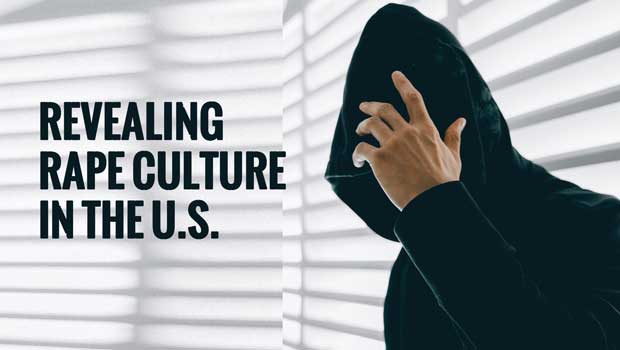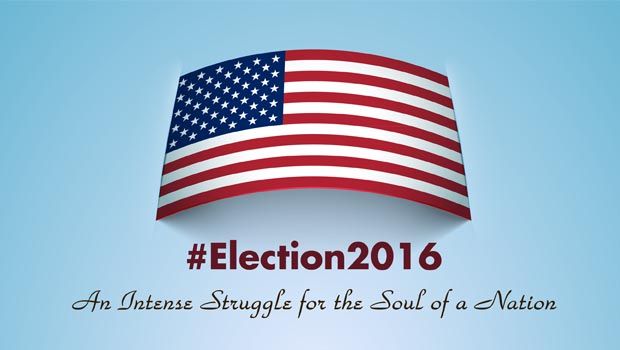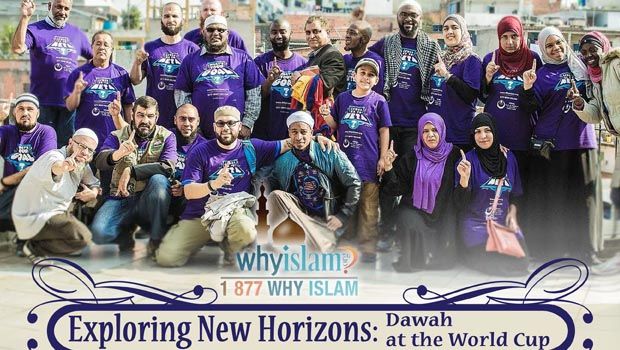Sexual violence represents a serious and long-standing problem in the United States, as well as in many other parts of the world. In most cases the victims are women; however, sexual violence can involve perpetrators and victims of the same gender, and men also can be the victims of abuse by women. Nevertheless, statistics show that women are more likely than men to be victims of sexual assault and domestic violence. According to RAINN (Rape, Abuse & Incest National Network), described as the nation’s largest anti-sexual violence organization, there are approximately 321,500 victims (age 12 or older) of rape and sexual assault each year in the United States, the majority of whom are female.
It is alarming that one out of every six women in the U.S. has reported being the victim of rape or attempted rape during her lifetime. Females, ages 16-19, are four times more likely than the general population to be victims of rape, attempted rape, or sexual assault, and 90 percent of all adult rape victims are women. Statistics are typically based on crime survey estimates that rely mostly on FBI, police, and emergency room medical reports, as well as academic investigations. However, many women report sexual violence to friends, family, relatives, clergy, physicians, and nurses – sources not reflected in crime or academic surveys, while others do not report the abuse at all. Therefore, the number of victims is most likely greater than studies reveal.
The World Health Organization (WHO) argues that in war-torn zones around the globe the collapse of social infrastructures and the disintegration of communities and families, as well as the disruption of adequate response systems and aid, leave women and girls especially vulnerable to sexual and other forms of gender-based violence.
#MeToo
In a survey by the Thomson Reuters Foundation, released in June 2018, about 550 global experts on women’s issues ranked India as the world’s most dangerous country for women. Afghanistan and Syria were in second and third places, with Somalia and Saudi Arabia following. In fact, nine out of the top ten countries were in Africa, the Middle East, and Asia. However, the United States took the number ten spot as one of the worst places in terms of “the overall risks faced by women, and specifically regarding healthcare, access to economic resources, customary practices, sexual violence, non-sexual violence and human trafficking.”
If regions of war and armed conflicts are cauldrons for sexual violence against women, it is hard to believe that the United States, a global superpower, would also harbor such social ills when there are no such conflicts occurring on its soil. Furthermore, the U.S. is often regarded as an example of the highest standard of progress and democracy, and its ideals and values are extolled in other parts of the world seeking similar success.
As far as the reasons for the U.S. being ranked the 10th most dangerous country for women in the survey mentioned above, the survey noted that it is “the only Western nation to appear in the top 10. The United States shot up in the rankings after tying joint third with Syria when respondents were asked which was the most dangerous country for women in terms of sexual violence including rape, sexual harassment, coercion into sex and the lack of access to justice in rape cases. It was ranked sixth for non-sexual violence. The survey was taken after the #MeToo campaign against sexual harassment went viral in October last year … and thousands have joined the #MeToo social media movement to share stories of sexual harassment or abuse.” Thus, the American nation was not only ranked in the top ten most dangerous places for women, but also number three when it comes to sex-related crimes, tied with war-ravaged Syria.
The #MeToo movement is an American-born viral social media movement against sexual harassment and assault which took off in October of 2017 after allegations of sexual misconduct emerged against film producer and founder of Miramax, Harvey Weinstein. Weinstein was accused by more than 70 women, including famous actresses, of rape, sexual assault, and/or sexual harassment. After these accusations were brought forth, and the #MeToo movement was launched in Twitter and Facebook, more and more women became vocal about their experiences with sexual abuse in every setting and industry imaginable.
Women were suddenly emboldened and given a voice through this social media phenomenon during a time when people in America were neither aware of the degree of sexual violence occurring around them, nor did they realize the widespread nature and extent of abuse in their own communities. Victims included not only high-profile celebrities, but also women in every walk of life. A woman, who herself is not a victim, often has a family member or close friend who is. The conversation was no longer taboo, but a necessary and long overdue exposé.
While, statistically speaking, no one really knows how many victims of physical, sexual, or emotional abuse simply suffer in silence or never come to the attention of anyone outside the immediate family, the #MeToo movement provided a network of support and reassurance even for victims of sexual misconduct in the entertainment industry, the corporate world, and government. The #MeToo movement even brought out accusations against a number of prominent Muslim leaders.
However, the reality is that although the #MeToo movement is relatively new, violence against women has always existed in the U.S. Donna E. Shalala, Professor of Political Science and Health Policy at the University of Miami and former Secretary of the U.S. Department of Health and Human Services, once remarked, “In this country, domestic violence is about as common as giving birth.” Shalala served under former President Bill Clinton and was president of the Clinton Foundation from 2015 to March 2017. Ironically, exactly twenty years before the #MeToo movement, Clinton was accused of being involved in an improper, sexual relationship with a 22-year-old White House intern, Monica Lewinsky (while he was 49 years of age). He was also accused of sexual assault and harassment by four other women on various occasions. These cases received extensive media coverage, but their revelatory nature regarding sexual violence against women in the U.S. never gained traction as times were different and victims who spoke out were most often disbelieved or silenced by a “he said/she said” environment. The #MeToo movement changed all that and during the 2017 presidential election women also accused Donald Trump of sexual abuse.
History Repeating Itself
Allan Smith, writing in an article at Business Insider, a financial and business news website, notes, “More than a third of the men who’ve occupied the Oval Office have been either accused of sexual misconduct, alleged to have had an affair, fathered a child out of wedlock with someone they were conducting such an affair with, or boasted of their extramarital sexual escapades.” Attitudes towards women have been established throughout history and influenced by cultures, religious beliefs and scriptural interpretations, and the traditional role of women in the society and communities in which they live. Since the American revolution, women in the U.S. have struggled to thrive as respectable members of society, sharing equal rights with men. Traditionally, a woman’s role in the young nation was limited to her home and she was not allowed to take part in politics. Although it is probable that not everyone living in that era was a devout follower of Christianity, they were still influenced by the Christian faith and were driven by the commonly accepted morals, ethics, and values derived from Anglo-European models of governance which were influenced by biblical law.
The Nineteenth Amendment to the Constitution, finally granting women the right to vote, was adopted in 1920, not even a hundred years ago. Similarly, it was not until the 1960s that laws were passed to prevent sexual discrimination in the workplace and equal opportunities of employment for women. It was not until 1994 that the Violence Against Women Act was passed, allowing women to seek civil rights remedies for gender-related crimes. Six years later, the Supreme Court invalidated the provision of the law permitting victims of rape, domestic violence, etc. to sue their attackers in federal court.
The Feminist Movement
Feminism was born as a response to gender-related issues of inequality, traditional gender roles, sexual violence, and a generalized bias against women. However, feminism has appeared and reappeared over the past hundred years in different forms and for varying reasons, all related to the plight of women in society. In the United States, the first wave of feminism dealt with the women’s suffrage movement and sought equal rights for women with regards to voting and ownership of property. The more modern movements differ when it comes to whether liberation for women should go beyond equality in the workplace, government, the judicial system, and at home or if it entails a sexual revolution. The latter encourages women to seek dominance over men in reverse roles of sexuality and to seek sexual gratification freely outside of a traditional marriage, while the former maintains that this behavior is nothing more than perpetuating the exploitation of women as sex objects in a male dominated society. Muslims, and members of other faith communities must always be alert, to differentiate between legitimate advocacy of rights and those trends and movements that bring about disruption of family values and traditional morality, concealed under the pretense of liberation and progress.
Despite these conversations, gender inequality still exists, and women are still being raped and abused and treated as the inferior sex. The magazine, Everyday Feminism, defined rape culture as, “situations in which sexual assault, rape, and general violence are ignored, trivialized, normalized, or made into jokes.” An example of this is that regardless of the appalling statistics about the number of women experiencing sexual violence in their lifetimes, according to RAINN, only three percent of rapists will serve time in jail. A Gallup poll from 2011 showed that more women than men reported fearing for their safety while walking alone at night. Their report states that, “Women in larger cities are less likely to feel safe in their communities. For women who do not have any alternative mode of transportation (aside from public transportation), harassment can be a daily or weekly occurrence.”
Negative attitudes towards women are also promoted in popular culture with the depiction of submissive and/or seductive roles for women in film, television, video games, in print, and in the music industry. But by far, the greatest example of the prevalence of rape culture in the U.S. is the booming pornography industry, which has been the subject of debate amongst modern feminists. The question they raise is whether women who choose to be hypersexualized for money are exercising their right to control their own bodies and life choices, or are they still being victimized. Is not the porn industry the pinnacle of degradation against women? Some lawmakers think so.
Fighting for Change
In 2016, Del. Robert G. Marshall, a Republican from Virginia proposed a resolution to the state legislature declaring that pornography was a public health hazard. His resolution stated in part: “Whereas, because pornography treats women as objects and commodities for the viewer’s use, it teaches girls that they are to be used and teaches boys to be users; and whereas, pornography normalizes violence and abuse of women and children; and whereas, pornography treats women and children as objects and often depicts rape and abuse as if such acts are harmless…” Because of the availability of porn on the internet and mobile devices, it has become a billion-dollar industry in the U.S. and around the world.
Whether or not pornography is one of the causes of violence against women is not easy to scientifically prove, but what is obvious is that it does not help the problem. Within the porn industry there exists what is called rape porn and sadomasochism, showcasing men inflicting pain and humiliating women for pleasure. Likewise, male characters in video games and music videos often ridicule and degrade women, indicating their dominance and power. Instead of addressing this immorality, too many policymakers dismiss it as freedom of expression.
As a nation, America must come to terms with the fact that it is not immune to the ills that exist in the world. Since the beginning of the U.S.-led “War on Terror,” which began in 2001, the Western media has devoted much of their time to exposing gender disparities in the Middle East and the Muslim world. Journalists have traveled to remote villages in Afghanistan and condemned the backward Taliban for their mistreatment of women, they have filmed documentaries in the slums of India to bring attention to child marriages, they have denounced female genital mutilation in communities all over Africa, and have criticized Saudi Arabia for not allowing women to drive or to travel without a male relative. These critiques and conversations are crucial and commendable. The question for all Americans is this — what is the United States doing to take care of its own women? American women are also suffering, and their dignity is being crushed, and no woman is deserving of that, no matter what part of the world she resides in.
Prophet Muhammad (pbuh) said, “The most complete of the believers in faith are those with the best character, and the best of you are the best in behavior to their women” (At-Tirmidhi).





